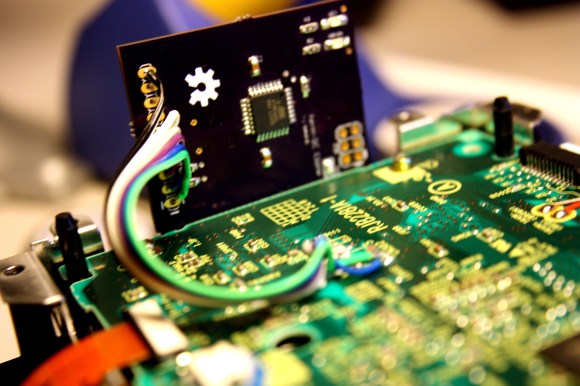
From the title and the image above you surely have already grasped this Fail of the Week. We’ve all been there. Design a board, send it to fab or etch it yourself, and come to find out you’ve missed a connection. Automatic checks in your software should prevent this, but when making small changes it’s easy to overlook running the checks again. This is exactly what [Clint] did with this board; leaving a net unconnected in the schematic, which made its way through to the board layout and into the OSHPark boards.
Okay, so fix it with jumper wire which is clearly what he did (white wire in the lower left image above). But since this is rev3 of his PCB it’s pretty upsetting that it happened. The meat and potatoes of the fail is the missing software feature that led to it. KiCad doesn’t have a pin swap tool in the board layout. Really? We use KiCad frequently and didn’t realize that the feature was missing. Needing to simplify his board layout, [Clint] went back to the schematic to swap some resistor network pins by hand. He pushed the change through the netlist and into the board layout, not realizing he had left an input gate unconnected.
A bit of searching proves that pin swapping may be coming to KiCad soon. It’s on the CERN roadmap of features they plan to add to the open source PCB layout software. We remember hearing about CERN’s plans quite a while ago, and thought we featured it but the only reference we could find is [Chris Gammell’s] comment on a post from back in December. It’s worth looking at their plans, these are all features that would make KiCad a juggernaut.
EDITORIAL NOTE: We’ll soon be out of story leads for this series. If you have enjoyed reading weekly about fails please write up your own failure and send us the link. Of course any documented fails you find around the internet should also be sent our way. Thanks!
 Fail of the Week is a Hackaday column which runs every Wednesday. Help keep the fun rolling by writing about your past failures and sending us a link to the story — or sending in links to fail write ups you find in your Internet travels.
Fail of the Week is a Hackaday column which runs every Wednesday. Help keep the fun rolling by writing about your past failures and sending us a link to the story — or sending in links to fail write ups you find in your Internet travels.











